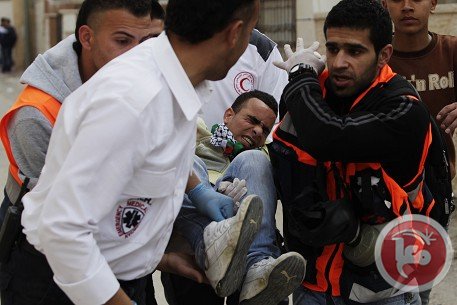Tag: Red Crescent
-
Red Crescent medics treat 339 protesters in the West Bank
30 March 2012 | Ma’an News Agency BETHLEHEM (Ma’an) — The Palestinian Red Crescent treated 339 protesters on Friday at protests around the West Bank to mark Land Day, a spokesman said. Muhammad Ayyad told Ma’an that five people were seriously injured and 55 hospitalized as protesters commemorated six Palestinians who were killed by Israeli…
-
Israeli forces fire shells towards ambulance, prevent transfer of injured Palestinian fighters to hospital
Early in the morning of Saturday the 4th of April, two Palestinian resistance fighters (Mohamed Hamayda 23, Jammel Gofa, 26) were wounded near the Green Line, east of Jabaliya. Ambulances from the Palestinian Red Crescent Society made a first attempt to reach the two injured Palestinians shortly after 7am, when, according to medical sources, they were…


